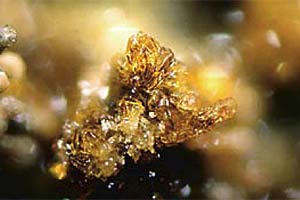A Mountainous Terrain
Located on the northwestern tip of Africa, Morocco is bounded to the north by the Mediterranean Sea, to the northwest and west by the Atlantic Ocean, to the south by the Western Sahara and to the southeast and east by Algeria.
With an average altitude of 800 meters above sea level, its geography is dominated by four mountain ranges: the Rif, the Middle Atlas, the Grand Atlas or High Atlas or Atlas Major (where the Jbel Toubkal massif, the highest peak in Morocco at 4,165 metres above sea level, is located) and the Anti-Atlas. The Rif range runs parallel to the Mediterranean Sea while the other ranges cross the country from northeast to southwest, an area later crossed by wide valleys and river plains that run into the Sahara Desert.
Morocco has a number of rivers, but hardly any of these are navigable, therefore they are only used to generate electricity and for irrigation. The main one is the Draa River, which measures 1,200 kilometres in length.
A mediterranean climate predominates in Morocco, temperate in the west and north due to the Atlantic Ocean influence. Nonetheless, inland the climate is continental with abrupt temperature changes. The Atlas area is damp with frequent snow, and the south has a desert climate.
In Search of Better Opportunities
Around 58% of the Moroccan population lives in cities, which are mainly located in regions near the Atlantic and Mediterranean coasts. Between 2000 and 2005, Morocco’s average growth rate was 2.8%, two points of a percent lower than that of the whole continent.
A particular feature of this country is its high level of emigration, encouraged by its geographic proximity to Europe and the better employment opportunities that can be found there. In 2004 there were 2.6 million Moroccans living in the Old Continent.
Abundant Phosphate
The main foundations of the Moroccan economy are agriculture, manufacturing (especially of crafts) and mining.
Agriculture, depending on the weather and its effect on crops, contributes between 12 and 20% of the GDP. The main crops are wheat, potatoes, grapes, sugarcane, and sugar beet.
The manufacturing sector provides 19% of GDP, with craftwork (8%) having great importance in areas such as the weaving of carpets, leather curing, the production of jewellery and pottery.
For its part, mining contributes around 21% of export earnings and employs about 40,000 people. Phosphate (used as fertiliser and as a restorative), of which Morocco has three quarters of the known world reserves, is the most important mineral that is mined. In fact, it is the largest exporter and the third largest producer at the global level of raw phosphates. Likewise, thanks to a fishing fleet of 3,000 ships and a modern port infrastructure, Morocco leads the sea products industry (production and exports) in Africa and the Arab world.
A Powerful King
The functions of the Executive branch in Morocco are exercised by the Prime Minister and the Cabinet. Nonetheless, the King (also Head of State) holds the most important executive powers, and names the ministers, who are responsible to him and Parliament. The Parliament, where the legislative branch is based, is composed of two houses: the House of Councillors (with 270 members) and the House of Representatives (with 325 members).
The Judicial branch is divided into two levels: inferior jurisdiction such as the Court of the First Instance, and superior jurisdiction such as the Court of Appeal and the Supreme Court.
Generally speaking, Morocco is divided into 16 regions.
Rivalry Between Cities
In Morocco there are two cities disputing the honour of being the most important tourist attractions in the country: Fez and Marrakech.
The first argues that it is typically Arab, beautiful and cultured. The second, pure Berber, claims that it has a rich artistic heritage, is open, and can show the benefits resulting from a positive mixture of different cultural influences.








 Muere Evita
Muere Evita